 |  |
Article and photos by David Kier
The Real de Santa Ana was California’s oldest mine and first secular/ non-mission town. Nearly 30 years earlier, Santa Ana was also the failed site of a Jesuit mission. The story of Santa Ana began on December 21, 1720 when a soldier named Ignacio de Rojas, accompanying Padre Jaime Bravo, discovered silver ore on an expedition to explore the region south of La Paz. The location was a place known to the native Cora Indians as ‘Marinó’. Nearly 28 years would pass before any recorded mining began.
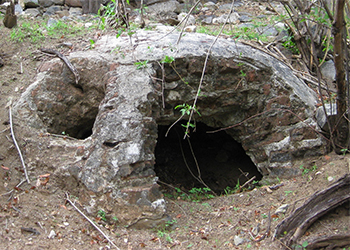
In July, 1721, Padre Ignacio María Nápoli, of Palermo, Italy sailed south from Loreto to La Paz to begin his exploration for a new mission site between La Paz and Cabo San Lucas. Padre Jaime Bravo of the La Paz mission joined Nápoli and the two spent 8 difficult days traveling overland to reach the gulf shore at Bahía de las Palmas where they believed the Cora Indians would be awaiting conversion. After 10 days waiting to gain their confidence, Cora women and children came and accepted gifts of food and cloth from the Jesuit missionaries. The Cora, in turn, presented the Europeans with fresh fruit and seeds. Nápoli considered this first contact a success and returned to La Paz to gather supplies for a new mission.
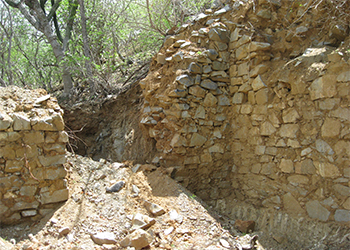
Because the trail between La Paz and Bahía de las Palmas was so long and difficult, Nápoli decided a mission should first be located midway between La Paz and Bahía de las Palmas. In 1722, Padre Nápoli founded his first mission near the place called Marinó, and he renamed it ‘Santa Ana’. This is where Ignacio de Rojas discovered silver two years earlier. Two adobe rooms were built to serve as a chapel and a home for the padre.
In 1723, Nápoli had collected enough food to feed the workforce needed to build a large church for his mission of ‘Santiago de los Coras’, at Santa Ana. A storm hit the region and the people took refuge inside the church that was being built. The side wall collapsed upon them, killing and injuring many. The padre and his soldiers were unharmed and soon the relatives of those dead or wounded placed blame on Nápoli and the Spaniards. Nápoli quit the Santa Ana project and returned to Loreto to regain his confidence to try again.
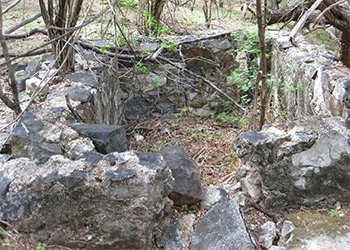
Padre Nápoli returned in 1724, but this time further to the south of the Cora lands and into the land of the Pericú, at a place they called Aiñiní. It was well watered and the mission remained in the area until it closed in 1795. Jesuit papers describing the new location were not widely circulated until 1973, so writers continued to call the mission ‘Santiago de los Coras’, in error. The original mission site at Santa Ana was raided and burned to the ground in 1725.
The silver ore discovered at Santa Ana in 1720 began to be mined by 1748 by two men, Manuel de Ocio (a mission soldier) and Ignacio de Mena (a Guadalajara merchant). Becoming a ‘real’ meant Ocio and Mena paid taxes on the silver and were recognized by the government. A higher status for the new town would to become a ‘villa’ which was a royally charted settlement larger than a pueblo or real.
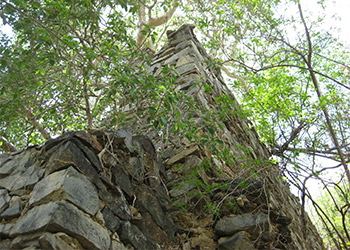
Ocio imported married men to work the mines believing them to be less of a threat to the native women and to keep peace with the mission padres. Eventually, the men would have their women, and Santa Ana soon became a town needing services and supplies. The land produced silver, but little more. Soon the town’s people went to the missions to beg, or trade silver for food and clothes. The padres would come to Santa Ana for spiritual relief. Ocio would eventually raise cattle for food and as with other tasks, each new one brought with it more problems to be dealt with.
The Jesuits were expelled from California in early 1768 and a total reorganization of life there was begun by José de Gálvez,
the Visitador General for Spain. The Real de Santa Ana was an important town in those years and much planning for the new
Franciscan mission system in California was made there. The scientific world benefited by accurate observations of the transit
of Venus
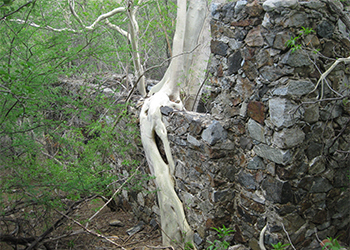 across the face of the sun. The transit was recorded by Joaquín Velázquez de León at Santa Ana, on June 3, 1769 and the
data helped verify the distance from the earth to the sun.
across the face of the sun. The transit was recorded by Joaquín Velázquez de León at Santa Ana, on June 3, 1769 and the
data helped verify the distance from the earth to the sun.
In 1769, Gálvez had drawn up grand city plans for the Real de Santa Ana, but the silver ore became depleted at Santa Ana and most activity transferred to nearby San Antonio. The Real de Santa Ana was reported as being virtually deserted by 1821.
Ruins of the water driven ore mills and a smelting oven from the 1700’s are some of what remains to this day of the first California mining center. The site is now behind a locked gate, about 7 miles south of San Antonio.